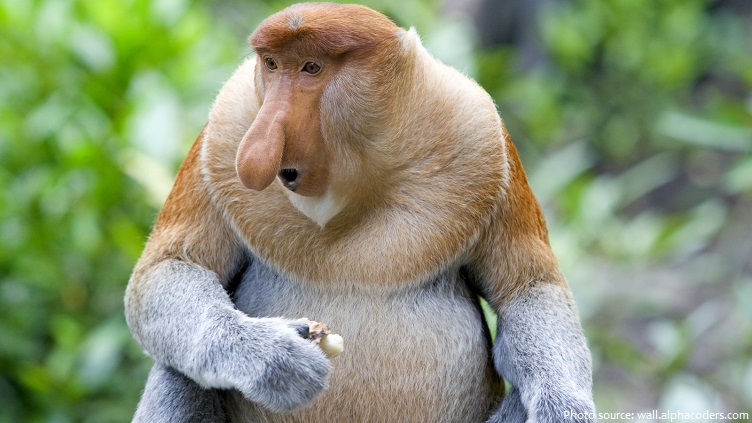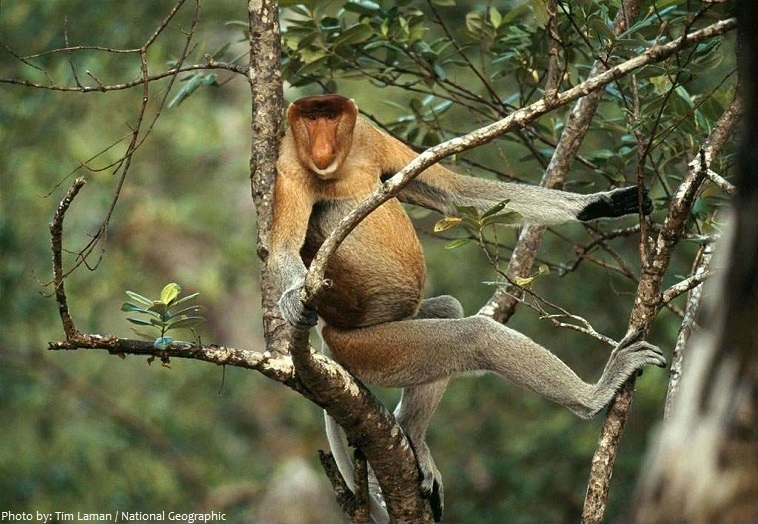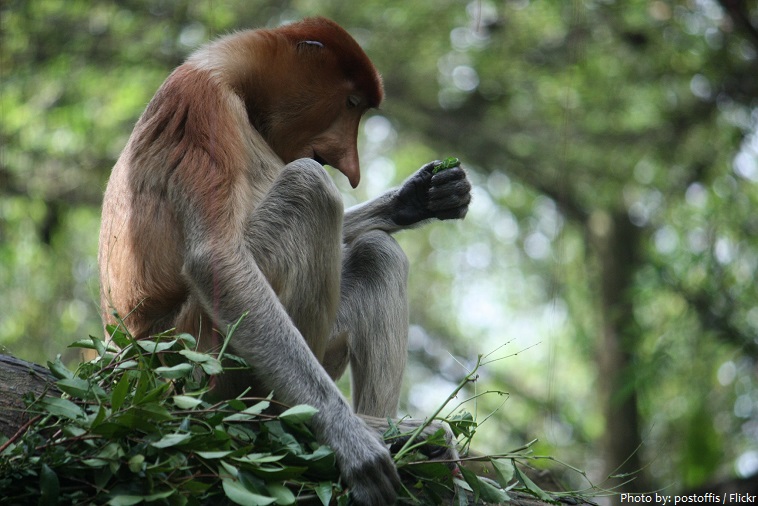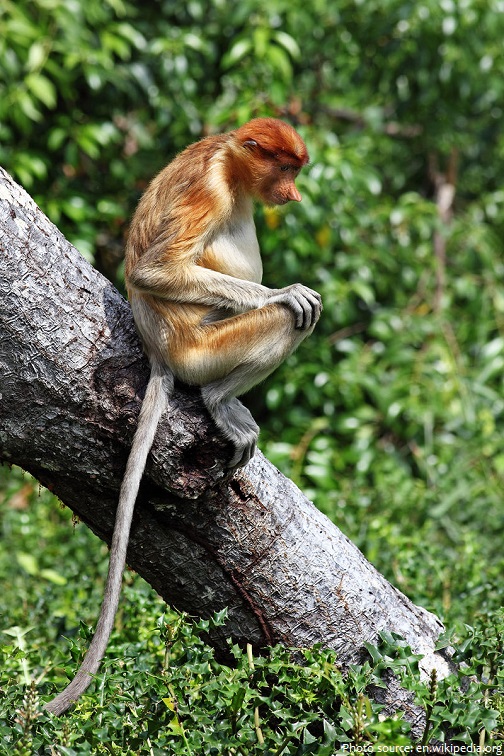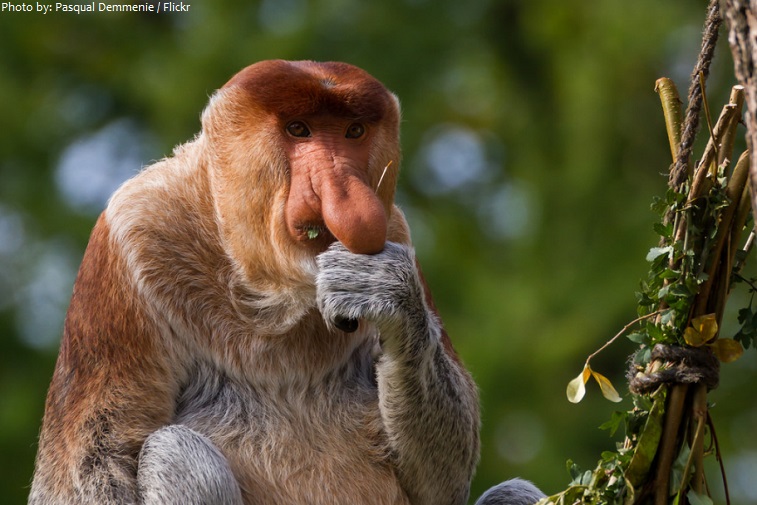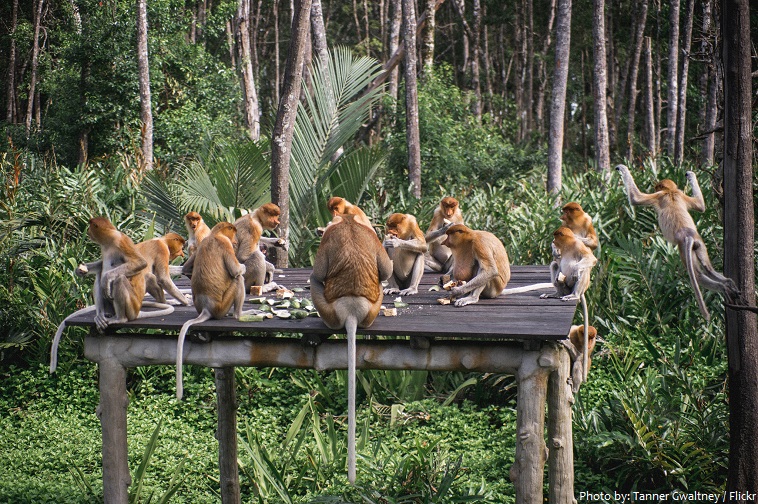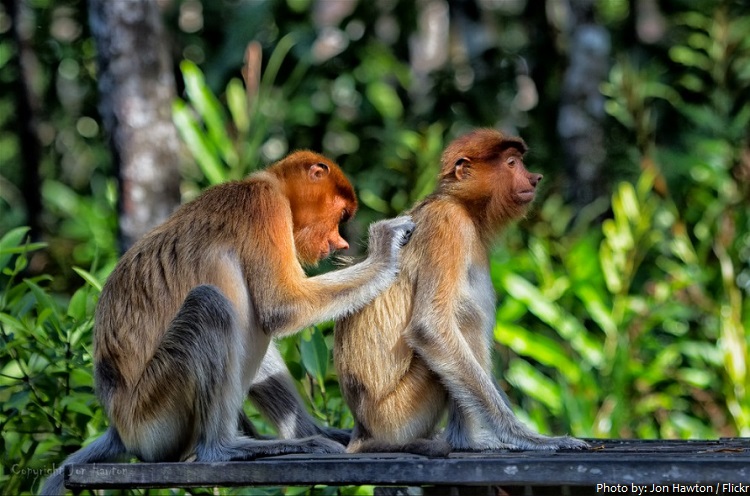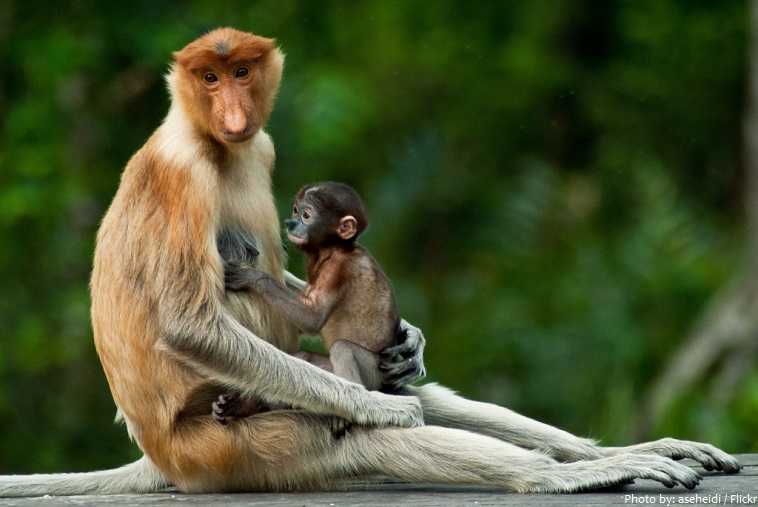The proboscis monkey (Nasalis larvatus) or long-nosed monkey is a species of old world monkey.
The proboscis monkey is found only on the island of Borneo in Southeast Asia. It is found on all three nations that divide the island of Borneo: Brunei, Indonesia, and Malaysia.
The proboscis monkey inhabits the mixed diterocarp-kerangas forests, mangrove forests and lowland forests near fresh water and rivers.
The lifespan is up to 20 years in the wild and up to 30 years in captivity.
The proboscis monkey is a large species, being one of the largest monkey species native to Asia.
Males have a head-body length of 66 to 76.2 cm (26 to 30 in) and typically weigh 16 to 22.5 kg (35 to 50 lb), with a maximum known weight of 30 kg (66 lb).
Females have a head-body length 53.3 to 62 cm (21 to 24.4 in) and typically weigh 7 to 12 kg (15 to 26 lb), with a maximum known mass of 15 kg (33 lb).
The fur of the adult proboscis monkey is bright orange, reddish brown, yellowish brown or brick-red on the back; underfur is light-grey, yellowish, or greyish to light-orange; and the arms, legs, and tail are gray.
Their faces are cream colored with small, intelligent brown eyes.
Proboscis monkeys are most noticeable due to the males large nose which can exceed 10.2 cm (4.0 in) in length, and hangs lower than the mouth. Females have a much smaller nose that does not have the large bulbous end. Nevertheless, the nose of the female is still fairly large for a primate.
Theories for the extensive length of their nose suggest it may be sexual selection by the females, who prefer louder vocalisations, with the size of the nose increases the volume of the call.
Proboscis monkeys are diurnal, preferring to be active from late afternoon until dark.
The proboscis monkey is largely arboreal and moves quadrupedally and by leaps. It is known to jump off branches and descend into water.
Proboscis monkeys are perhaps the most aquatic of the primates. They have webbed toes, an adaptation that enables them to swim long distances.
Proboscis monkeys are folivores and frugivores. They prefer fruits, seeds, young leaves, and shoots of mangrove. They may also eat some invertebrates such as caterpillars and larvae.
Proboscis monkeys look potbellied because of their huge chambered stomachs.
They have complex, chambered stomachs that rely on a host of symbiotic bacteria for digestion. Occasionally, they chew their cud to allow more efficient digestion and food intake.
They may cross rivers by swimming if alone or they may cross by jumping from a tree on one bank to one on the other side at narrow points if in a group.
Proboscis monkeys generally live in groups composed of one adult male, some adult females and their offspring. All-male groups may also exist. Some individuals are solitary, mostly males.
Several of the groups will come together in the evening to sleep. These multigroup gatherings are called bands.
Sometimes groups gather during the day and travel together, but individuals only groom and play with those in their own group.
Social grooming is performed, usually between females. The grooming usually last 1 to 5 minutes and is performed by both individuals.
Proboscis monkeys are known to make several vocalizations. Honks are made by males as a threat or to warn of predators. Shrieks are made by females and both sexes of juveniles to show aggitation or excitement, and screams are given during agonistic encounters.
The males mate with females in their social group.
Proboscis monkeys give birth to a single offspring after a gestation of 166–200 days. Births usually occur at night or in the early morning. Baby is born with blue faces, which gradually shift to the cream color of adults.
The young begin to eat solid foods at six weeks and are weaned at seven months old. Infants stay close to their mothers for about one year.The mother will allow other members of her group to hold her infant.
Predators of the proboscis monkey include crocodiles, clouded leopards, eagles, monitor lizards and pythons.
The population of the proboscis monkey is on the decline and the species has been listed as endangered since 2000. According to the IUCN Red List of Threatened Species, proboscis monkeys are limited to scattered and inconsistently distributed populations throughout their native range.
The primary threat to proboscis monkeys is habitat loss; because of logging and oil palm plantations; also the coastal habitats frequented by proboscis monkeys have been converted into shrimp farms and settled by humans.
In some regions, they are hunted due to the species being treated as a delicacy, as well as its use in traditional Chinese medicine.
The proboscis monkey is protected by law in all regions of Borneo.
There are thought to be around 7,000 proboscis monkeys left in the wild today.
The proboscis monkey also goes by the Indonesian name monyet belanda (“Dutch monkey”), or even orang belanda (“Dutchman”), as Indonesians remarked that the Dutch colonisers often had similarly large bellies and noses.
